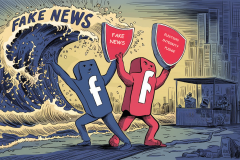The Twitter brand pages launched last month need to work hard to engage the user to be successful, according to an eye track study released Wednesday.

SimpleUsability studied four of the 21 brand pages that went live last month. While Twitter had previously allowed promoted tweets and corporate accounts, the brand pages launched in December more closely resemble the way Google+ and Facebook handle corporate presences. Twitter brand pages include space for company logos and taglines, as well as space to embed videos and other media.
While some initially heralded Twitter brand pages as a “game changer,” that scenario may not play out. One of the major problems facing brand pages, as noted in the SimpleUsability study, is that once someone starts following a Twitter account or brand page, there is usually no reason for them to return to the page as all of the new and relevant information will show up as tweets in the followers own timeline.
The study used eye tracking technology to study how viewers viewed the Twitter brand pages for Coca-Cola, HP, McDonald’s and Staples. The best way to engage users, the study found, was to give viewers with visual content in promoted tweets and in the brand pages.
Among the study’s other findings:
- Too much of a “corporate feel” will deter users, but it’s still important for companies to use their Twitter pages as an invitation for consumers to learn more about their brand.
- Contests and promotions help draw repeat visitors to a brand page and get them to stay on a page longer.
- Brand pages that come across as sales-heavy will lose visitors.
Users ultimately want brand pages to show a “more human side” to the company, the study said. The HP site, for example, scored well because it did not emphasize sales and advertising, and even made an effort to respond to individual followers. Some of the tweets on the page responded to customer complaints, which improved transparency and credibility as viewed by page visitors.










